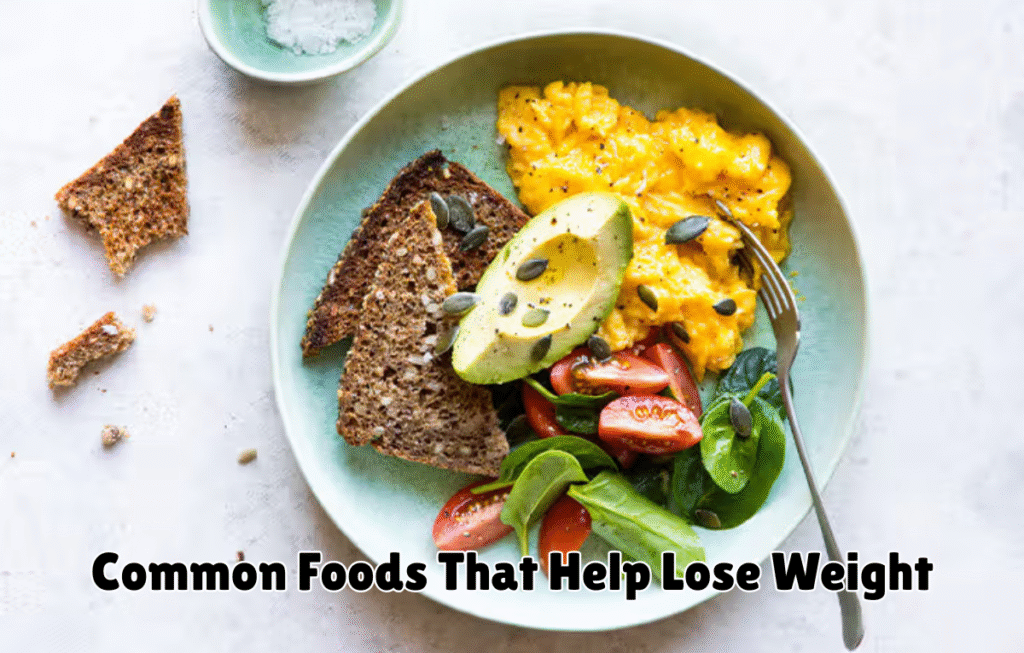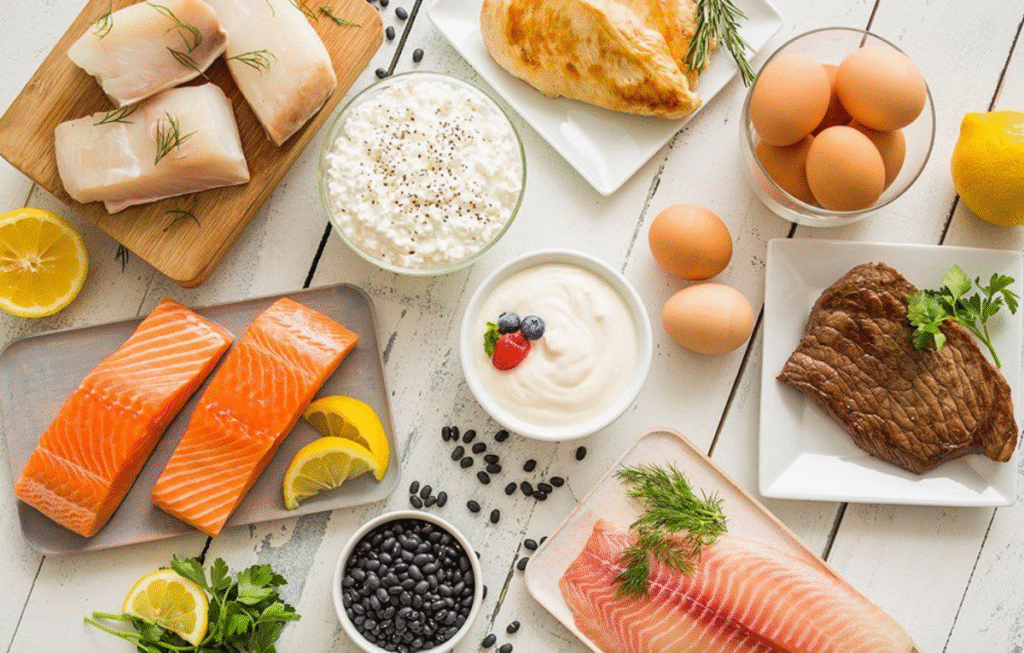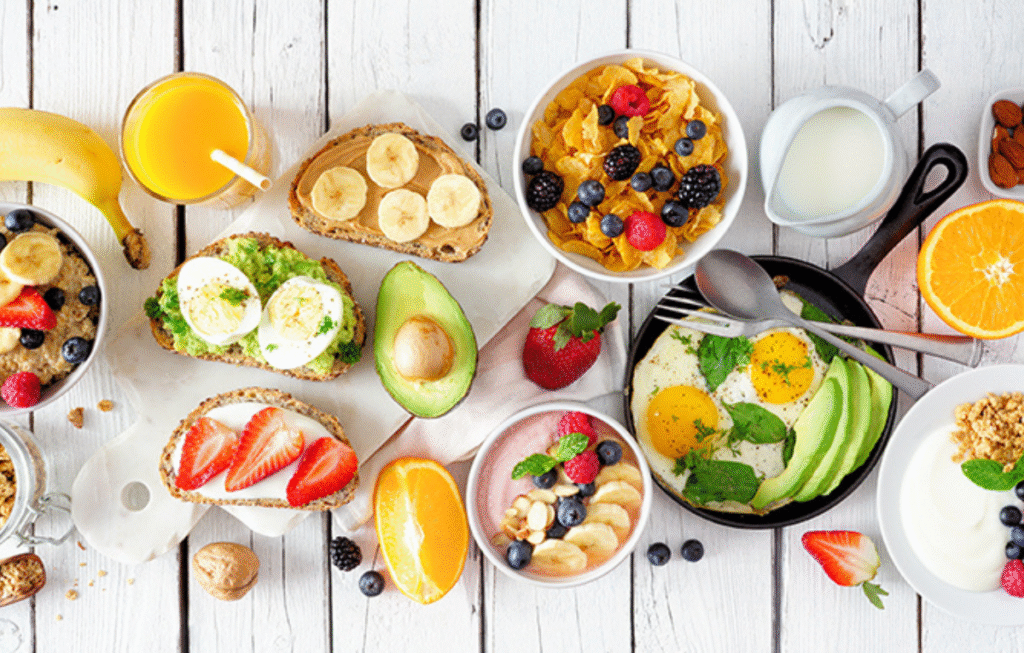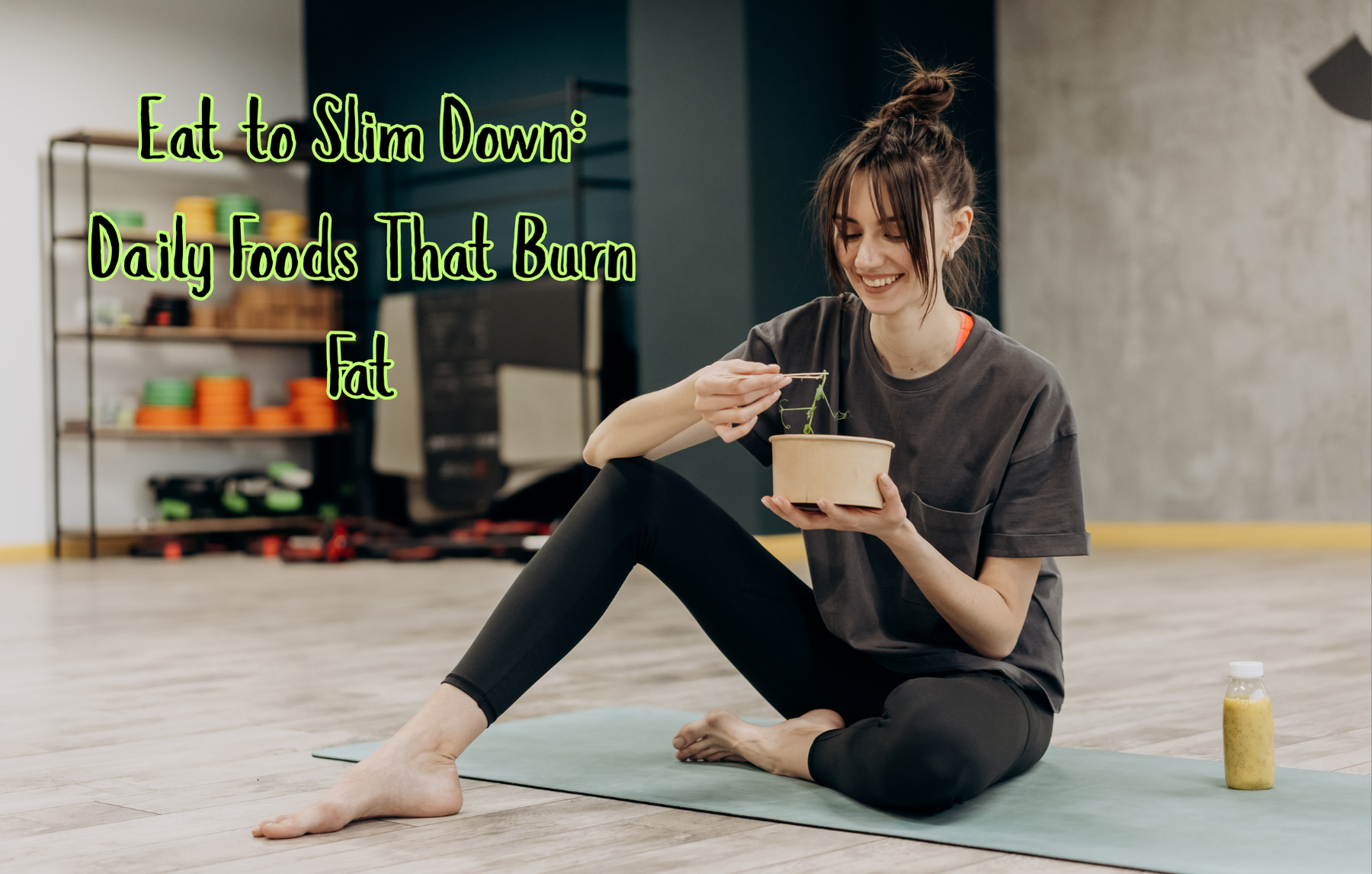Fork Your Fat Away: Daily Foods That Assist With Weight Loss
Slow and consistent weight loss isn’t always a magic solution—it is all approximately the little, each day demanding situations and decisions we make. “Fork Your Fat Away” is set arranging your plate and deciding on foods that fill you up without consuming as many energy. Below, I’m explaining it in honest Hindi—as if a pal changed into telling you—and also including some new, research-based totally facts.
Why are “fat-supporting” foods necessary?
First, let’s learn how some foods help your fat loss:
- Appetite and Satisfaction
When foods are rich in fiber, protein, and water content, you become full sooner. This makes you satisfied with less. - Metabolism and Thermic Effect
The body needs more energy to digest protein, hence it aids in burning calories. - Preservation of Lean Mass
When dropping weight, the frame risks losing now not only fat however also muscle. Eating good enough protein and weight education minimizes this loss. - Gut Health, Microbiome, and Inflammation Reduction
Some foods nourish the stomach of the stomach, reduce the infection and increase insulin sensitivity – everyone helps them with fat loss. - The Importance of Time and Quality
Even though a food is healthy, if it’s too processed or taken in high amounts, it can contribute to weight gain as well. Fresh, lesser processed, and in controlled amounts is better.
Keeping these guidelines in mind, let’s now consider common foods that help lose weight.
Common Foods That Help Lose Weight

These foods are not novelties, however were time-tested options inside the discipline of nutritional science. What are they, and the way can you use them, in conjunction with their advantages? They are indexed underneath.
1. Leafy and Non-Potato Vegetables
Spinach, fenugreek, bathua, mustard vegetables, broccoli, cabbage, bell chili, zucchini, carrots and cucumbers – just a few examples.
Why are they good?
They contain low calories but lots of fiber and water—keeping you full on fewer calories.
In addition, crucifer of relatives are rich in vegan, especially (including broccoli and cabbage), compounds (sporofan, glucosinolate) which is resource metabolism and inflammatory manipulation.
How to Use?
- Eat half of your plate as vegetables.
- Add a cupful of green leafy vegetables to a smoothie.
- Lightly sauté or steam vegetables.
- Blend various colored vegetables into soups or salads.
2. Plant-Based High-Fiber Grains (Whole Grains & Complex Carbs)
Like oats, millet, sorghum, ragi, quinoa, brown rice, whole wheat, millet, etc.
Why are they beneficial?
They are soluble fibers, such as oats, the beta-gluk, which brakes digestion, improves the feeling of perfection and keeps blood sugar strong.
When replacing micro -carbohydrates such as white rice and white bread with whole grain such as brown rice and whole bread, the metabolism and stomach increase.
How to use?
- Have oats or porridge for breakfast.
- Opt for brown rice, millet, or sorghum over white rice.
- Eat quinoa or millet alongside vegetables or lentils.
- Make roti or chapati with whole grains, but in small amounts.
3. Lean Proteins

Eggs, chicken/turkey (skinned), fish, soy (tofu, tempeh), lentils, cottage cheese (low-fat), yogurt/Greek yogurt, etc.
Why are they good?
Protein controls hunger, increases thermal effect and preserves muscle tissue.
The fish containing more fat (omega inhibitor) can mainly reduce the infection and help reduce abdominal fat.
How to use?
- Include a protein source in all meals.
- Use boiled eggs, grilled or fried fish, lentils, vegetables, cottage cheese or curd.
- If vegetarian, use kidney beans, chickpeas, green grams and chickpeas.
4. Nuts, Seeds & Healthy Fats (Nuts, Seeds & Healthy Fats – In Moderation)
Almonds, walnuts, pistachios, flax seeds, chia seeds, pumpkin seeds, hemp seeds, and olive oil, avocados, etc.
Why are they good?
They include monounsaturated and polyunsaturated fat, fiber and bioactive compounds. They emptied the stomach, which reduces appetite.
Chia seeds are solely correct-2 tablespoons gel in 2 tablespoons gel appear in water and increase satisfaction.
But remember-they are calories-so the element is required.
How to use them?
- Sprinkle seeds/nuts over yogurt, oatmeal, and salads.
- Use 1 tablespoon of olive oil instead of thick cooking oils.
- Add a half an avocado to a salad or bowl (daily).
5. Berries & Low-Glycemic Fruits
Like blueberries, strawberries, raspberries, black plums, apples (with peel), pears, etc.
Why are they good?
Low calorie, rich in fiber and water—they fill you up with out supplying you with a sugar excessive.
Blueberries are in particular famous for antioxidants and metabolic functioning.
Apples have bioactive elements and pectin that dissolves fats.
Fork Your Fat Away: Everyday Foods That Help With Weight Loss
Eventually, it is not a magical trick is not about the daily small challenges and decisions we make. “Gaffle your fat away” is organizing your plate and choosing food that fills your stomach without consuming less calories. Here I break it easily on Hindi – as if a friend is telling you – and sharing some fresh research -supported facts.
Why are “fat-supporting” foods important?
Now, let’s see how some foods aid in your fat loss:
- Fullness and Hunger Control
You feel full quicker when foods are high in water, protein, and fiber. You feel full with less. - Metabolic Effect and Calorie Burning
It takes more calories for the body to digest protein, so it burns calories. - **Maintenance of Lean Mass
When shedding pounds, the body stands to lose not just fat but also muscle. Consuming enough protein and weight training prevents this loss. - Gut Health, Microbiome, and Inflammation Reduction
Some foods feed good bacteria in our gut, reduce inflammation and increase insulin sensitivity – which facilitates all fat losses. - The Importance of Time and Quality
Although a food is healthy, if it is heavily treated or eaten in large quantities, it also increases the weight. Fresh, less processed and healthy in appropriate quantities.
Keeping these rules in mind, let us now see daily foods that can aid weight loss.
Daily Foods That Aid Weight Loss

They’re not new trends, but are long-accepted options in nutritional science. Here are their advantages and how to incorporate them.
1. Leafy Vegetables and Non-Potato Vegetables
Spinach, fenugreek, bathua, mustard greens, broccoli, cabbage, bell peppers, zucchini, carrots, and cucumbers—are all examples.
What makes them so good?
Despite being low in energy, they are abundant in water and fiber, if you want to help you experience fuller on much less calories.
Cruciferial plants, which includes broccoli and cabbage, are also rich in compounds referred to as sporofen and glucosinolate that resource within the manage of irritation and metabolism.
How to Use?
- Hold half of your plate with vegetables.
- Sprinkle a fist with green leafy vegetables in a smoothie.
- Experiment with lightly sautéing or steaming veggies.
- Mix colored vegetables in soup or salad.
2. Plant-Based High-Fiber Grains (Whole Grains & Complex Carbs)
Like oats, millet, sorghum, ragi, quinoa, brown rice, wheat (whole), millet, etc.
Why are they useful?
They have soluble fibers (for example, beta-glucon in oats) that slows digestion, hungry for a long time and keep blood sugar stable.
When microscopic grains (white rice, white bread) change with full grain, the stomach decreases and metabolism is promoted.
How to use?
- Have oats or porridge for breakfast.
- Choose brown rice, millet, or sorghum instead of white rice.
- Have quinoa or millet as a side with vegetables or lentils.
- Use whole grains for roti or chapati, but keep the quantity moderate.
3. Lean Proteins
Eggs, chook/turkey (skin removed), fish, soy (tofu, tempeh), lentils, cottage cheese (low-fat), yogurt/Greek yogurt, and many others.
Why are they beneficial?
Protein allows control urge for food, growth the thermic impact, and maintain muscular tissues.
Fish containing greater fat (omega-three) can mainly limit infection and assist in belly fat reduction.
How to use?
- Include a protein source at each meal.
- Use boiled eggs, fried or grilled fish, lentils, vegetables, cottage cheese or curd.
- If you are a vegetarian, use kidney beans, chickpeas, green grams and chickpeas.
4. Nuts, Seeds & Healthy Fats (Nuts, Seeds & Healthy Fats – In Moderation)
Almonds, walnuts, pistachios, flax seeds, chia seeds, pumpkin seeds, hemp seeds, as well as olive oil, avocados, etc.
Why are they beneficial?
They are monouuneted and rich in polyunsaturated fat, fiber and bioactive substances. They slow down digestion, reduce appetite.
Chia seeds are especially beneficial-2 tablespoons seeds make a gel-like substance in water and increase satisfaction.
But note that they have a high calorie density – so parts should be checked.
How to use them?
- Top yogurt, oats, and salads with nuts/seeds.
- Opt for 1 tablespoon of olive oil instead of heavy cooking oils.
- Throw a half avocado into a salad or bowl (once daily).
5. Berries & Low-Glycemic Fruits
E.g., blueberries, strawberries, raspberries, black plums, apples (with skin), pears, etc.
Why are they good?
Low in calories, full of fiber and water – they dampen sweet suction without getting a sugar high.
Blueberries are especially known for their antioxidants and metabolic goodness.
Apples contain pectin and bioactive elements that prevent the breakdown of fat. Prevent fat oxidation and healthy intestinal bacteria.
How to use?
- Mix berries with oats, smoothies, or yogurt.
- Consume whole fruit rather than juice for fiber.
- Combine fruit with protein (yogurt or nut butter) to help control glucose better.
6. Fermented Foods & Probiotics
Greek yogurt (live cultures), kefir, fermented vegetables (kimchi, sauerkraut), idli/dosa (made from leavened dough), buttermilk, low-sugar kombucha, etc.
Why are they useful?
Encouraging a healthy gut microbiome can assist with weight management, lower inflammation, and enhance metabolism.
Certain research has indicated a beneficial association between consumption of probiotics and less belly fat.
How to use?
- Consume yogurt in breakfast or snacks.
- Consume a small quantity of fermented vegetables with meals.
- When having idli/dosa, prepare it from whole-grain flour and keep the portion under control.
7. Green Tea & Metabolism-Supporting Drinks
Green tea, matcha, and certain herbal teas.
Why are they good?
Green tea includes catechins (EGCG) that slightly boost fat oxidation and metabolism. Daily intake has been associated with lowering belly fat, particularly.
But magic is not involved—its influence is limited and only when used in combination with a well-balanced diet and exercise.
How to use?
- Replace one or two daily beverages (no addition of sweeteners) with green tea.
- May be taken hot or cold.
- Take matcha or saturated decoctions only if you are caffeine-tolerant.
Meal Plan Form — How to Mix + Dosage Recommendations
The following is a sample regimen to illustrate how to mix these foods:
| Meals | Examples | Tips |
|---|---|---|
| Breakfast | Chia + Oats + Berries + Greek Yogurt + Almonds | Fiber + Protein + Healthy Fat blend |
| Mid-Morning Snack | Apple (peel intact) + a handful of walnuts | Appetite suppressing |
| Lunch | Grilled Tofu / Fish + Large Side Salad (Spinach, Bell Pepper, Cucumber) + Quinoa / Brown Rice | Vegetables to take up half the plate |
| Evening Snack | Greek Yogurt + Fresh Berries or some Nuts / Seeds | Energy Level Maintenance |
| Dinner | Vegetable Curry + Dal / Paneer / Lean Protein + small Roti / Millet | Healthy oil, balanced nutrition |
| Nighttime beverage | Green tea or herbal tea (sugar-free) | Hydration and metabolic support |
Dosage instructions (rough, may vary based on individual and calorie requirements):
- Vegetables: Half of a plate as desired
- Whole grains/complex carbs: ⅓ portion or ½ cup cooked
- Protein: ¼ portion — target 20–30 grams of protein per meal
- Healthy fats/nuts/seeds: 1–2 tablespoons or a small handful
Be aware of distractions — what might do harm?
Certain foods that we think are healthy actually work against us:
- Flavored yogurts, fruit juices, granola bars, “low-fat” processed meals — normally excessive in sugar and low in fiber.
- Large quantities of nuts/seeds — are nutritious, but excessive in energy whilst fed on in huge quantities.
- White bread, processed components, sweets, and subtle grains — quick boom blood sugar and result in fat garage.
- Ultra-treated food tasting is easy to make it easier in nutrients, little nutrients and lighter over friends.
- Sweet drinks (soda, juice, sweet tea) – liquid energy often fails to prevent a feeling of completion.
New Research Glimpse (2024–2025)
- A meta-analysis determined that approximately 2 tablespoons of apple cider vinegar daily might help with moderate weight loss (1–3 kg over several weeks) — perhaps by slowing digestion and enhancing satiety.
- Studies indicate the necessity for both fiber and protein — not alone.
- Berries (particularly blueberries) are gaining more attention—they could be beneficial not just in managing fat but also in lowering chronic disease risk.
- Minimally processed diets and extremely-processed diets had been compared in trials, and the outcomes confirmed that with the equal quantity of energy, individuals certainly consume fewer energy and weigh much less when they comply with minimally processed diets.
All of this serves as a reminder that complete, minimally processed, protein- and fiber-rich ingredients paintings better than reprocessed and sugary foods.
Keys to Success: Tips and Sustainable Strategies
- Start Slowly
- Rather than making an entire diet change in one day—start with veggies, then grains, then bump up protein.
- Track Yourself for a Short Period
- Keep a 2–3-week record with an app or diary—this will give you an idea of how your protein consumption is enhancing.No, the amount of fiber and calories you are having.
- Be vary and flexible
- Don’t have the same foods every day—change your protein, cereals, vegetables, and sources of fat.
- Opt for whole foods
- The more natural and less processed, the better.
- Regulate your intake of energy-dense foods
- such as nuts, seeds, and avocados—they are high-calorie foods, so use them sparingly.
FAQs
What does “Fork Your Fat Away” mean?
It refers to selecting foods that are more filling on fewer calories to facilitate slow, lasting fat loss through everyday, intelligent food choice.
How does protein contribute towards losing weight?
Protein makes one feel full, raises metabolism through the thermic effect, and maintains muscle mass when losing weight.
Why is fiber essential for fat loss?
Fiber slows down digestion, makes you feel full longer, and regulates blood sugar—decreasing hunger and overeating.
Hi, I’m veda, a professional health content writer and passionate wellness advocate at HealthTipsIndia.com
. With years of experience in writing evidence-based, reader-friendly articles, I specialize in creating content that empowers people to live healthier, more balanced lives. Whether it’s nutrition, fitness, natural remedies, or preventive healthcare, I translate complex medical concepts into actionable tips tailored for the Indian lifestyle. My goal? To make trustworthy health information accessible to everyone—one article at a time.

